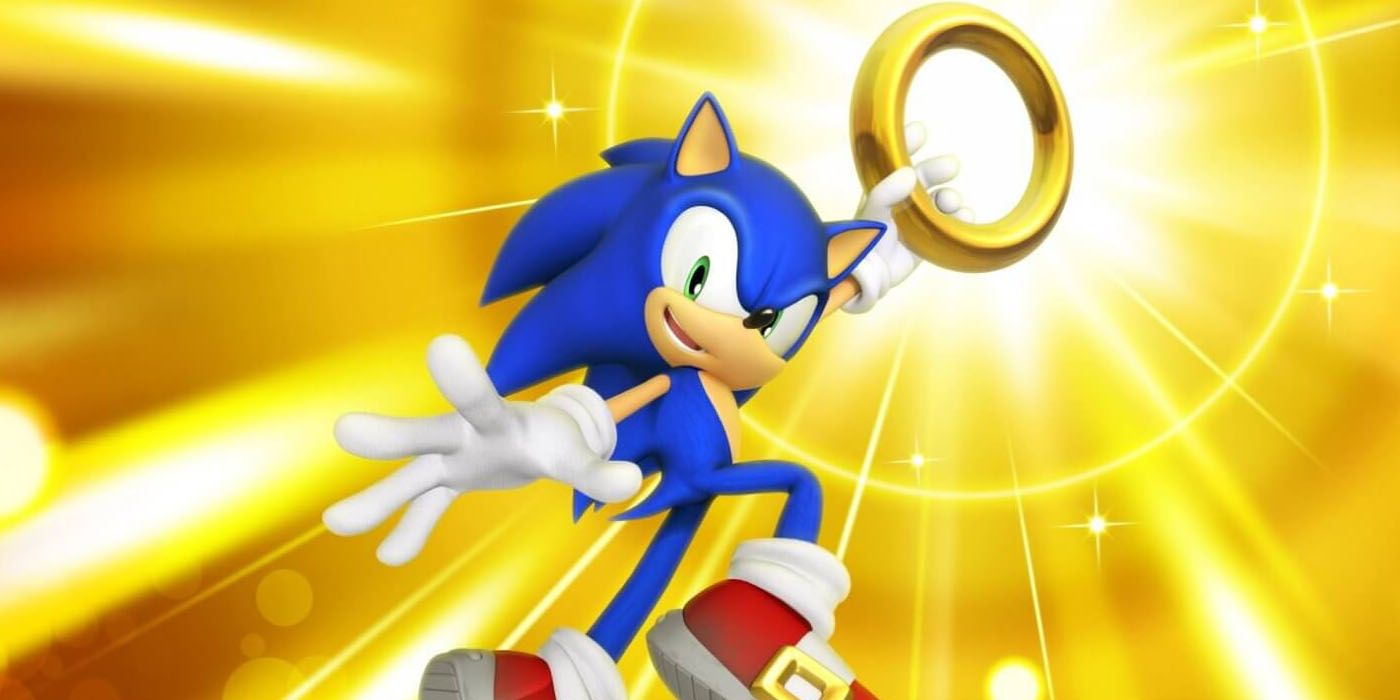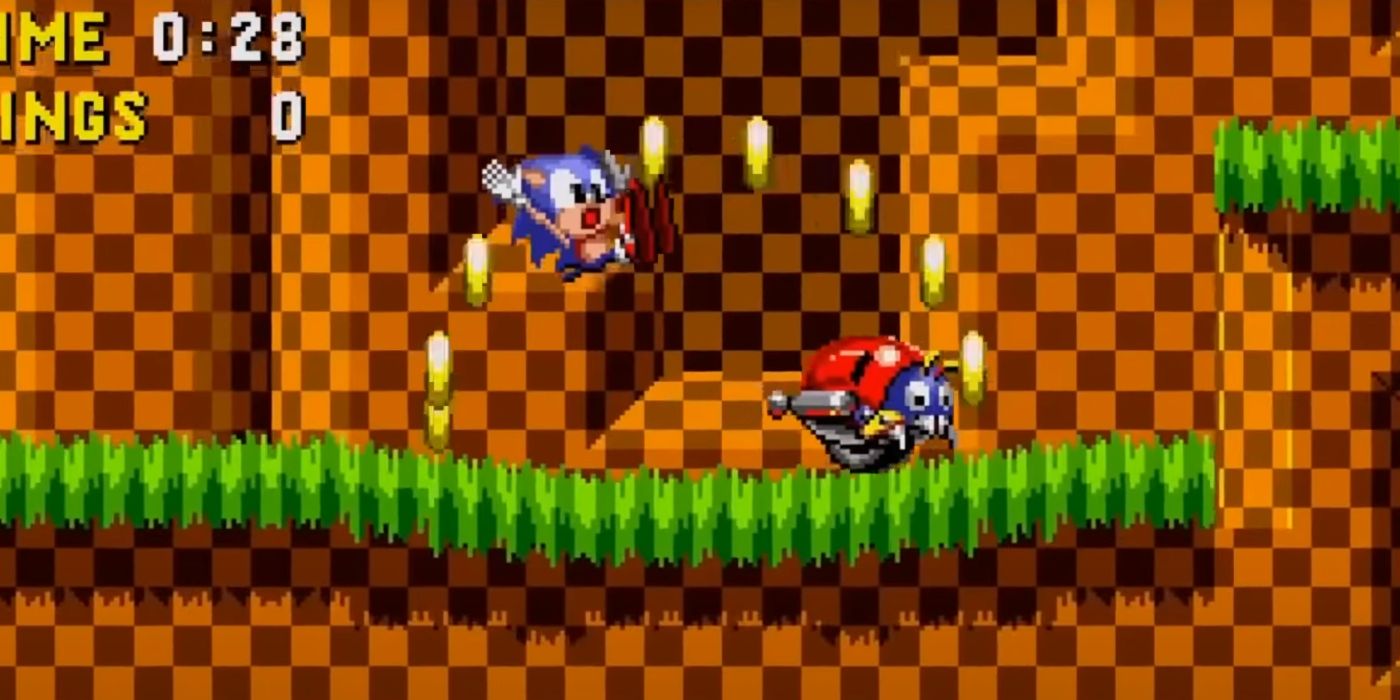One of Sonic The Hedgehog's most noteworthy and lifesaving gameplay mechanics was implemented two weeks before the first game launched. Players were introduced to Sega’s speedy blue mascot in 1991’s Sonic The Hedgehog, which featured the titular marsupial as he ran through colorful worlds, collected mystical gemstones called the Chaos Emeralds, and battled against the evil Dr. Robotnik. Since those humble beginnings, the Blue Blur would star in several sequels and spin-offs, build a memorable supporting cast of characters, and branch out into movies, comics, TV shows, and even the occasional Sonic The Hedgehog adult coloring book.
While the Sonic The Hedgehog franchise has evolved a great deal over the past 30 years, the core gameplay mechanics have remained largely the same. Sonic (or one of the many other playable characters the series has been host to) runs through a level to reach the goal at the end, jumping and bashing into hostile robot enemies and speeding past obstacles every step of the way. These levels are also littered with Rings, floating golden circles that serve no real narrative purpose but are nonetheless a vital commodity to Sonic. Whenever the speed-obsessed hedgehog takes damage, these Rings fly out, leaving him vulnerable to death if he suffers another hit. However, as long as Sonic has at least one of these Rings in his possession, he can’t die - and he can even gain an extra life by collecting 100 of them before a level is finished.
Sonic The Hedgehog’s Ring mechanics have been a core element of the franchise since the very beginning, but according to original Sonic lead programmer Yuji Naka, they were actually a last-minute addition to the original game. In a recent Twitter post (translated by CBR), Naka explains that two weeks before the first Sonic The Hedgehog was set to launch, he and his team changed the game’s health system to “one where if you had even one ring, you would not die.” Indeed, Sonic would keep at least one Ring whenever he was struck by an attack, giving him the chance to continue his run even if the player failed to collect the other lost Rings before they disappeared. This also added tension to the boss battles against Dr. Robotnik at the end of each level, which featured very few Rings for Sonic to collect should he lose the ones he gathered before reaching the evil scientist. Yuji Naka also noted that he and his team had worked to ensure that Sonic The Hedgehog was the best it could be down to the last minute, and takes pride in how “...I believe that the game is still being enjoyed by people worldwide today.”
Sure enough, the Sonic The Hedgehog franchise has endured for a little over three decades now, remaining a staple of gaming despite the many divisive entries to the series in more recent times. All the same, players will be able to re-experience the 2D platformers that started it all with this year's Sonic Origins collection, before diving into a brand-new 3D adventure with Sonic Frontiers.
There will likely be plenty of Rings to collect in both these upcoming Sonic The Hedgehog titles, making it all the more interesting to find out that Yuji Naka and his team of programmers were still trying to figure out how they worked two weeks before the original game was set to take the world by storm. Thanks to the efforts of Sonic Team, players can depend on the Blue Blur’s ever-growing collection of Rings to help see them through to the final boss.
Source: Yuji Naka/Twitter (via CBR)


